Over several decades, scientists have continuously searched the universe for planets with the potential of supporting life (Silverman 1). In the Solar System, however, the Earth is the single planet located in the habitable zone of the star and offers the ‘just right’ environment for life to originate and develop (Science News 1).
Consequently, research findings indicate that Mercury and Venus are too hot to support life while Mars and the outer planets are too cold for life (Science News 1).
The Earth, unlike several planets, has liquid water, life gases and appropriate quantities of sunshine that allowed the origin of living thing (Science News 2). As a result, the Earth can be considered suitable for investigating the factors that make a planet habitable.
Characteristics of a Habitable Planet
The Solar System
Over several years, scientists have constantly searched for habitable planets in the universe, but the Earth remains the ultimate known habitable planet (Kazan 1).
The Solar System is characterized by small rocky (Terrestrial) planets such as the Earth and giant gaseous (Jovian) planets such as Jupiter. Currently, there are 53 planetary systems that as confirmed by relevant scientific research findings (Wikipedia 1).
Mercury has a rocky surface without water and atmosphere while Venus has extreme temperatures (482oC) that would not support any known form of life (Universe Review 8). On the other hand, Mars is a dry, frozen desert which does not have the potential to support any known life form (Universe Review 8).
In comparison, the Earth is the right planet for life because of the presence of liquid water for life, an atmosphere for warmth, and the correct weight for sustaining tectonics.
Since liquid water is an excellent solvent in which life can originate and evolve, other planets must contain liquid water to allow for life development.
The presence of liquid water on the Earth’s surface explains its diverse life forms and differentiates it from the rest of the planets in the Solar System.
According to relevant research, the habitable zone could be extended significantly as a result of the greenhouse effect (Eponline 1). For instance, the habitable zone around a Sun-type star extends from nearly 0.95 to 1.4 AUs.
A smaller and brighter star than the sun, on the other hand, has its habitable zone nearer approximately 0.08 and 0.12 AUs (Eponline 1).
“The Pierrehumbert’s research, however, gives sufficient evidence that a terrestrial planet with a hydrogen atmosphere increases the inhabitable zone to approximately 1.5 AUs (Mars) and 15 AUs (G-stars)” (Eponline 1).
Figure 1 gives the method employed in the determination of a planet lying within the habitable region of its star.
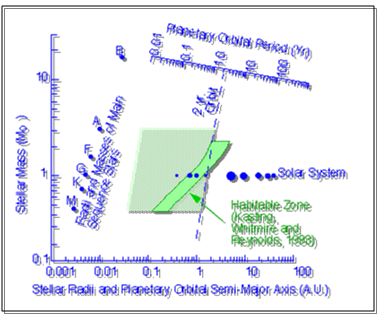
Figure 1: The surface temperature of a Planet
The Habitable Zone
The Circumstellar Habitable Zone
For a planet to sustain liquid water on it surface, it must lie within the habitable zone of a planetary system (Wikipedia 1). Outside the habitable zone, such planet will not get sufficient solar radiation to make up for heat losses; hence, water will remain exist in a solid form.
On the contrary, planets closer to the star will receive excessive radiation leading to vaporization of the existing forms of water.
The Habitable zone (CHZ) (figure 2) refers to the circular covering of space around a star where conditions are perfect for the origin and development of life (The Encyclopedia of Science 1).
As such, the Habitable Zone refers to the area surrounding a star where an appropriate planet can maintain the essential conditions for life (Space Dog 1).
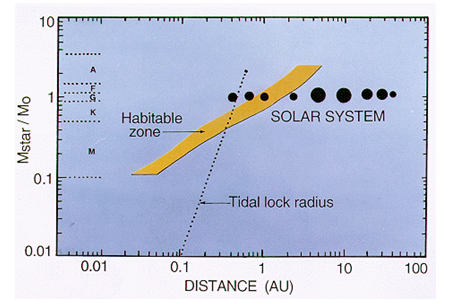
Figure 2: The Habitable Zone (HZ)
In relevant scientific studies, researchers have shown that sun-type stars evolve through three stages that could create a habitable zone to sustain life. As a sun-type star evolves, during the first stage, its brightness and size increases leading to an outward movement of its habitable zone (figure 3 a) (Sol Station 11).
This first evolution process takes about 10 billion years as the star burns hydrogen in its core. As a result, the habitable zone may extend from the current 2 to 9 Aus, leaving the inner section of the zone habitable for billions of years.
While the star changes from hydrogen to helium burning, a process that takes nearly 20 million years, it changes in brightness and bulges nearly 10 times the size of the sun (figure 3 b) (Sol Station 11).
Consequently, the habitable zone may extend from between 7 and 22 Aus, leaving the inner zones habitable for approximately one billion years.
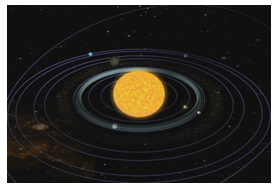
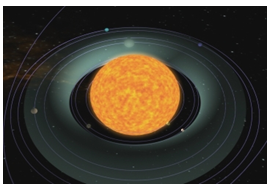
Figure 3: (a) Sol-type star first stage evolution; (b) Bulges into a giant star extending the habitable zone to between 7 and 22 AUS.
The Galactic Habitable Zone
According to various scientific sources, a planetary system should also fall within a perfect locality in a galaxy to allow for successful habitation and development of life (Wikipedia 4).
This idea led to the conception of the Galactic Habitable Zone (GHZ) as the appropriate positioning for a life supporting planetary system. In order to support life, a planetary system must be sufficiently near the galactic core where sufficient amounts of heavy elements are present (Wikipedia 4).
Presence of such elements would allow for the formation of habitable terrestrial planets required. In order for the planetary system to remain secure from lethal high-frequency radiation that would destroy life, it should be located at safe distances from the galactic core.
In the Milky Way, for example, the GHZ lies at about 25,000 light years from the center of the galaxy just right to allow for safe development of life (Wikipedia 4).
In comparison, the sun has an unusually less elliptical orbit than that of other stars of similar edge, which exists around the center of the galaxy (Sol Station 12).
Sol’s orbit is barely inclined in relation to the surface of the galaxy (figure 4); thus, checks it from sinking into the core of the galaxy that comprises of several life-threatening supernovae (Sol Station 12).
Additionally, the minimal inclination to the surface of the galaxy prevents sudden crossings that would result in collision with life-threatening comets (Sol Station 12).
As a result of these unusual occurrences, complex life and human intelligence successfully emerged on Earth, which is not the case in the other known planets.
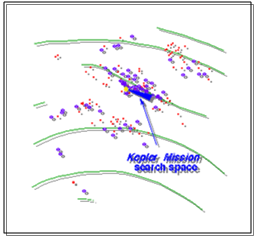
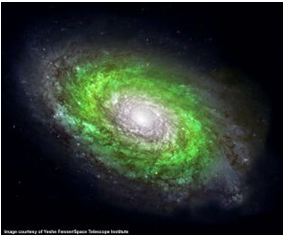
Figure 4: The galactic region around Sol where approximately 10% of the Milky Way’s stars exist.
Formation of Habitable Planets
Several modern theories suggest that the formation of planets starts with the agglomeration of small-sized particles within circumstellar disks of dust and gas to form “planetesimals” (Sol Station 14).
Such disks seem to form near stars that are in the process of condensation from massive molecular clouds.
As such, the development happens to be a usual procedure of star formation as relevant research has confirmed the existence of such disks around several young stars (figure 5) (Sol Station 14).
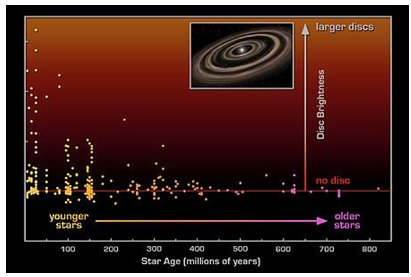
Figure 5: Dusty disks seen around 256 stars confirm the formation of planets through lengthy collisions.
Right inside the disks, the planetesimals continuously collide and group to form bigger protoplanetary bodies which finally become planets. On the cooler exteriors of the disks, solid ices from other elements such as methane and water link up with the dust particles.
Some theories explain that when protoplanets develop into large masses while still having surplus quantities of gases, they form gas giant planets characterized by massive gas envelops (Sol Station 14).
Examples of such planets in the Solar System include Jupiter, Saturn, Uranus and Neptune. On the contrary, planetesimals developing inside the warmer sections of the disk become small rocky planets with thin envelops of gaseous elements.
Astronomers assert that the development of stars and planets is a complex process; hence, there is no clear prediction for a possible outcome (Sol Station 14). In 2003, certain scientists observed that giant planets formed in the inner orbits of stars whose spectra have greater amounts of elements heavier than hydrogen and helium.
“On April 18, 2007, however, astronomers using the Spitzer Space Telescope announced survey findings that planetary dust disks located within1.6 light years of O-type (figure 6) stars are likely to be boiled off by superhot radiation and winds” (Sol Station 15).

Figure 6: Planetary disks close to O-type stars likely to be boiled off by intense radiation.
The Search for Habitable Planets
Techniques for Identifying Planets
As modern technology advances, more advanced techniques and instruments that give improved planet search results are used.
Some of the techniques involved in planet search include the Doppler shift method, transits, microlensing and astrometry. Astronomers have employed these methods over several years yielding several results.
Firstly, the Doppler shift (figure 7) method locates planets by measuring the deflection of the spectral lines within a stellar spectrum that results from the gravitational pull on the mass (Planet Quest 1).
Thereafter, scientists use appropriate methods for calculating the mass and orbit of the detected planet.
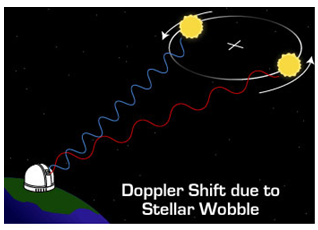
Figure 7: The Doppler Shift Method.
Secondly, “the transit method (figure 8) measures the drop in the luminosity of a star as the planet passes between the Earth and the star” (Planet Quest 2). However, the produced effect increases with the size of the planet, and vice-versa.
In this method, for instance, a rocky planet with an orbit comparable to that of the Earth produces a minute dip in stellar brightness lasting few hours (Planet Quest 2).
This technique offers better results than several methods since it draws conclusions about both the planet and the star using the shape of resultant light curve.

Figure 8: The Transit Method.
Thirdly, gravitational microlensing method (figure 9) detects planets through the gravitational lensing effect brought about by planets.
As such, the technique originates from a section of Einstein’s theory of general relativity that gravity bends space (Planet Quest 2). Therefore, as a planet moves past a star along the observer’s line of vision, the gravitational pull acts like a lens.
As a result, light rays are focused leading to a brief steady rise in brightness and adjustment in the apparent location of the star (Planet Quest 2).
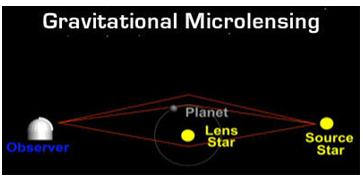
Figure 9: The Gravitational Microlencing Method.
Finally, the astrometry measurement method (figure 10) assesses the accurate motion changes of a star while it travels across the sky, and interprets the fluctuations from captured movement (Planet Quest 1).
Planets in the solar system have the characteristic effect on the sun resulting in the formation of a to-and-fro movement that would be detected several light years from the system (Planet Quest 1).
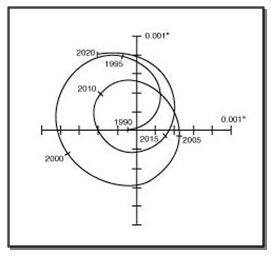
Figure 10: The Astrometric Measurement Method.
Kepler’s Mission
As the search for Earthlike planets in the extrasolar region intensifies, more hope and progress is made by astronomers.
In particular, the discovery of exoplanets in the 1990s revolutionized astronomy and took man’s perception on the cosmos to a different level (Hadhazy 1).
On March 6, 2009, scientists at NASA successfully launched Kepler (figure 11 a) to search and detect stars that are highly likely to have habitable properties similar to the Earth (Planet Quest 1).
Figure 11 b shows a computer generated image of Kepler in space and its search area as illustrated against the night sky respectively.
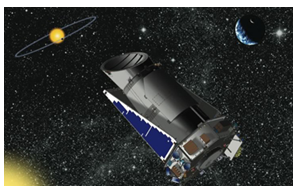
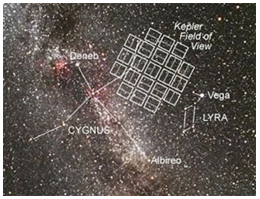
Figure 11: (a) A computer illustration of Kepler; (b) Kepler’s search area as shown against the night sky.
“Kepler searches for planets using a specialized one-meter diameter telescope called a photometer to measure small changes in brightness caused by transits” (Planet Quest 1).
Kepler has detected several planets since its launch, and some sources show that the spacecraft has already found 706 potential alien planets while still checking more than 156,000 stars lying in the same territory of the sky (Chow 1).
In 2010, several sources reported that NASA’s spacecraft had already identified more that 100 planets (Chow 1). On the contrary, mission scientists confirmed that the assertions were not true, at that time, since only five alien planets had been identified outside the solar system (Moskowitz 1).
At the current time, however, findings show that the spacecraft has successfully identified more than 1,235 planetary candidates, and 54 of them lie in the habitable zone (Space Dog 1).
Lisa Kaltenegger and Dimir Sasselov, who are CfA astronomers, assert that only six out of the listed 54 planets lies in the potential habitable zones of their stars (Space Dog 1).
In their research, the two astronomers established that the habitable zone in the solar system starts from Venus (orbit) and extends beyond the orbit of Mars.
When these findings are compared to the planetary candidates observed by Kepler, only six planets are considered to exist in the habitable zone.
New Discoveries
As a result of intensive planet search, more promising discoveries on the potential habitable planets have been established (Firth 2).
With that trend, therefore, scientists believe that there is hope of finding more habitable Earth-like planets and possibly with alien life.
Extrasolar Planet COROT-9b
In 2010, scientists made their first discovery of an extrasolar planet which they consider as not so hot planet (Mcmillan 1).
Since this was the first time in a long time to discover a relatively cold extrasolar planet, scientists became more hopeful for other discoveries. The planet, occurring 1,500 light years from the Earth, was detected by the COROT satellite; therefore, scientists referred to it as COROT-9b (Matson 2).
The temperature of the planet ranges from approximately -23o to around 157o Celsius and its atmosphere could have water vapor (Cowen 2).
Despite the fact that the planet may not be habitable, scientists believe that if the gaseous planet had a moon, the moon could be habitable.
Habitable Planet Gliese 581g System
In September 2010, an announcement for the discovery of Gliese 581 (figure 12) planet was made claiming that the planet is in the habitable zone of its star (Atkinson 2).
According to relevant sources, the planet is approximately four times the size of the Earth (Lemonick 2). Additionally, the star is categorized as a red dwarf and is only 20 light years away from the Earth (Hsu 1).
The discovery of this Earth-sized planet within the habitable zone of the red dwarf resulted in increased hopes for the existence of extraterrestrial life (Rothschild 1).
Currently, the planet forms one in a family of six Gliese 581 planets (Scalice 1). On the contrary, Heller established that Gliese 581g may be potentially inhabitable because of tidal locks; hence, water was an unlikely occurrence on the planet (Corbion 2).
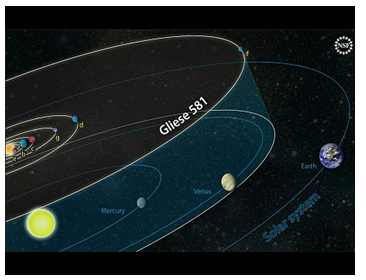
Figure 12: Planetary Orbits of the Gliese 581 System.
Exoplanet Planet Gliese 581d
Another exoplanet found to lie within the habitable zone of its star is known as the Gliese 581d (Catchpole 1). During the initial discovery, scientists had claimed that the planet would not be able to support life as the temperatures were too cold to permit the existence of liquid water (Richard 1).
However, further research confirmed that the planet’s atmosphere was just right to keep the planet warm and allow water to exist in the liquid state (Richard 1).
In fact, other findings show that the planet may have large and deep oceans just like the Earth; hence, the planet lies in a habitable zone (Voisey 3).
The planet is two times the size of Earth and gives hopes of finding other extrasolar planets in the habitable zones of their stars (Richard 2).
The HD 85512b in the Southern Constellation of Vela
In September 2011, European astronomers reported the discovery of another planet (HD 85512) beyond the solar system and consider it to be in the habitable zone, however, just barely (Tate 2).
This discovery should be the second planet to be detected outside the solar system with the right ingredients to support life (Telegram 1).
“The HD 85512b has been identified as one of the sixteen Earth-like planets detected by the HARPS instrument using a 3.6-metre telescope at ESO’s La Silla Observatory” (Schilling 1).
As such, the planet is approximately 3.6 times the mass of the Earth with high temperatures ranging between 85OC and 120OC (Schilling 1).
Furthermore, the humidity of the planet is also unusually high when compared to Earth values. Despite the fact that it lies in the habitable zone, the characteristics may not be just right for human habitation. However, some other life form may be able to survive in the above mentioned conditions.
The planet circles a star located nearly 35 light-years from the Earth and has a gravitational pull 1.4 times stronger than the earth’s pull. Its star, however, is 1,800oC cooler than the sun; hence, provides increased likeliness for supporting life (Telegram 1).
Conclusions
As established in the report, scientists have spent substantial time and funds in launching missions aimed at finding possible planets in habitable zones (Firth 1).
Fortunately, some of the results are promising such as the recent discoveries of the HD85512b, Gliese 581g, Gliese 581d and COROT-9b.
Such discoveries encourage astronomers to participate in several other researchers in the hope of finding other Earth-like planets that could just be right for life. In the future, new discoveries may lead to detection of other intelligent alien life or identification of a habitable environment just like the Earth.
In conclusion, man should keep on with the search for the Goldilocks Zone until the ultimate finding is established.
Works Cited
Atkinston, Nancy. “Could Chance for Life on Gliese 581g Actually Be 100%?” Universitytoday.com. Universitytoday, n.d. 30 Sep. 2010. Web.
Catchpole, Heather. “About Gliese 581D.” Hellofromearth.net. Hellofromearth, n.d. Web.
Chow, Denise. “Hundreds of Possible Alien Planets Discovered by NASA Spacecraft.” Space.com. Space, 18 Jun. 2010. Web.
Corbion, Ashley. “Exoplanets: The Habitable Zone Not so Habitable?” Atramateria.com. Atramateria, 2 Mar. 2011. Web.
Cowen, Ron. “Cool: New Exoplanet is Near Habitable Zone.” Wired.com. WiredScience, 17 Mar. 2010. Web.
Eponline. “Greenhouse Effect Could Extend Habitable Zone.” Eponline.com. Eponline, 29 Aug. 2010. Web.
Firth, Niall. “Does ET live on Goldilocks planet?” Dailymail. Dailymail, 17 Aug. 2011. Web.
Hadhazy, Adam. “Kepler’s Hunt for Earths Shows Progress at Space Conference.” Popularmechanics.com. Popularmechanics, 9 Mar. 2010. Web.
Hsu, Jeremy. “A Million Questions about Habitable Planet Gliese 581g (Okay, 12).” Space.com. Space, 1 Oct. 2010. Web.
Kazan, Casey. “The Search for Habitable Planets around Red Giant Stars.” Dailygalaxy.com. Dailygalaxy, 8 Aug. 2008. Web.
Lemonick, Michael. “An Earthlike Planet at Last.” Time.com. Timescience, 29 Sep. 2010. Web.
Matson, John. “A Warm Jupiter: A Newfound Exoplanet Bears a Resemblance to the Solar System’s Own Worlds.” Scientificamerican.com. Scientificamerican, 17 Mar. 2010. Web.
Mcmillan, Graeme. “Is Corot-9b Cool Enough to be Earth-2?.” Io9.com. Io9, 21 Mar. 2010. Web.
Moskowitz, Clara. “Claims of 100 Earth-Like Planets Not True.” Space.com. Space, 22 Jul. 2010. Web.
Planet Quest. “Kepler.” Planetquest.jpl.nasa.gov. Planetquest, n.d. Web.
Planet Quest. “Multiple Methods Help Track Elusive Quarry.” Planetquest.jpl.nasa.gov. Planetquest, n.d. Web.
Richard, Michael Graham. “Exoplanet Gliese 581d Has Atmosphere that May Allow Life, According to New Study.” Treehugger.com. Treehugger, 17 May. 2011. Web.
Rothschild, Lynn. “Life in Extreme Environments.” Nss.org. NSS, 2002. Web.
Scalice, Daniella. “Found: AnExoplanet Orbiting in the Habitable Zone of its Star.” Astrobiology.nasa.gov. Astrobiology, 29 Mar. 2010. Web.
Schilling, Govert. “Super Earth Found in Habitable Zone.” Sciencemag.org. Sciencemag, 12 Sep. 2011. Web.
Science News. “The Goldilocks Zone.” Science.nasa.gov. Sciencenews, 2 Oct. 2003. Web.
Silverman, Jacob. “Are we not the only Earth out there?” Howstuffworks.com. Howstuffworks, n.d. Web.
Sol Station. “Stars and Habitable Planets.” Sol Station.com. Sol Station, n.d. Web.
Space Dog. “Exoplanets in the Habitable Zones.” Spacedog.eu. Spacedog, 24 Aug. 2011. Web.
Tate, Karl. “Alien Planet HD85512b Holds Posiibility of Life (Infographic).” Space.com. Space, 12 Sep. 2010. Web.
Telegram. “Hot New Planet Could be in Habitable Zone_Barely.” Telegram.com. Telegram, 12 Sep. 2011. Web.
The Encyclopedia of Science. “Habitable Zone (HZ).” Daviddarling.info. Daviddarling, n.d. Web.
Universe Review. “Planetary Systems.” Universe-Review.ca. Universe-Review, n.d. Web.
Voisey, Jon. “Update on Gliese 581 Habitability.” Physorg.com. Physorg, 9 May. 2011. Web.
Wikipedia. “Habitable Zone.” Wikipedia.org. Wikipedia, 26 Oct. 2011. Web.